Year in Review: How Did the TSP Options Perform in 2019?
Do you contribute to the thrift savings plan (TSP)? For government workers, the TSP is a powerful savings vehicle. You benefit not only from agency contributions but also from tax-deferred growth. That means you don’t pay taxes on growth as long as the money stays inside the plan. Tax-deferral may help your assets compound at a faster rate than they would in a taxable account.
When you make a contribution to the TSP, you have the ability to allocate the funds across a range of investment options. They include the:1
- G Fund: Government Securities Investment Fund
- F Fund: Fixed Income Index Investment Fund
- C Fund: Common Stock Index Investment Fund
- S Fund: Small Cap Stock Index Investment Fund
- I Fund: International Stock Index Investment Fund
- Lifecycle Funds
The “alphabet funds” generally invest in the types of securities included in their respective name. For example, the G fund invests in government treasuries. The S Fund invests in small cap stocks.
The lifecycle funds invest in the other funds. However, the allocation of each lifecycle fund is automatically set to align with a future retirement date. For example, the L 2050 fund is for those who will retire in or near 2050, and invests more heavily in stocks because of the longer time horizon. The L 2020 fund is for those who are retiring in the near future, and it has a much more conservative allocation. Lifecycle funds are a convenient way to make sure you maintain an appropriate allocation at all times.
Through October 31, 2019, the TSP funds have the following year-to-date returns:2
- G Fund: 1.93%
- F Fund: 8.82%
- C Fund: 23.14%
- S Fund: 19.83%
- I Fund: 17.28%
- L Income: 6.06%
- L 2020: 7.55%
- L 2030: 13.47%
- L 2040: 15.72%
- L 2050: 17.61%
How will the TSP funds perform in 2020?
It’s impossible to predict future returns, especially in the short-term. However, there are steps you can take to minimize your exposure to risk and improve your odds for a successful outcome. Below are a couple steps you may want to take as you head into the new year:
Reassess your risk tolerance. What is your tolerance for risk and volatility? Do you know? If the answer is no, you’re not alone. Many investors haven’t really analyzed their feelings and comfort level with risk. As a result, they have an allocation that isn’t appropriate for their goals and needs.
A financial professional can use a variety of tools to determine your unique level of risk tolerance. They can then help you find the allocation that is likely to provide the best mix of risk and return for your needs.
Increase your contributions. In 2020, you can contribute up to $19,500 to the TSP. If you are age 50 and older, you can contribute an additional $6,500, for a total maximum contribution of $26,000.3
Of course, that limit doesn’t even include the agency automatic and matching contributions. If you contribute more than 5% of your income to the TSP, you get your contribution plus an additional 5% from your agency.4 Those contributions could help offset any investment downturns and keep your nest egg moving in the right direction.
Ready to get your retirement on track in 2020? Let’s talk about it. Contact us today at Benefit Resource Partners. We can help you analyze your needs and implement a strategy.
1 https://www.tsp.gov/InvestmentFunds/FundOptions/index.html
2 https://www.tsp.gov/InvestmentFunds/FundPerformance/monthlyReturns.html
3 https://www.tsp.gov/PlanParticipation/EligibilityAndContributions/contributionLimits.html
4 https://www.tsp.gov/PlanParticipation/EligibilityAndContributions/typesOfContributions.html
Licensed Insurance Professional. This information is designed to provide a general overview with regard to the subject matter covered and is not state specific. The authors, publisher and host are not providing legal, accounting or specific advice for your situation. By providing your information, you give consent to be contacted about the possible sale of an insurance or annuity product. This information has been provided by a Licensed Insurance Professional and does not necessarily represent the views of the presenting insurance professional. The statements and opinions expressed are those of the author and are subject to change at any time. All information is believed to be from reliable sources; however, presenting insurance professional makes no representation as to its completeness or accuracy. This material has been prepared for informational and educational purposes only. It is not intended to provide, and should not be relied upon for, accounting, legal, tax or investment advice. This information has been provided by a Licensed Insurance Professional and is not sponsored or endorsed by the Social Security Administration or any government agency. 19522 – 2019/11/27




